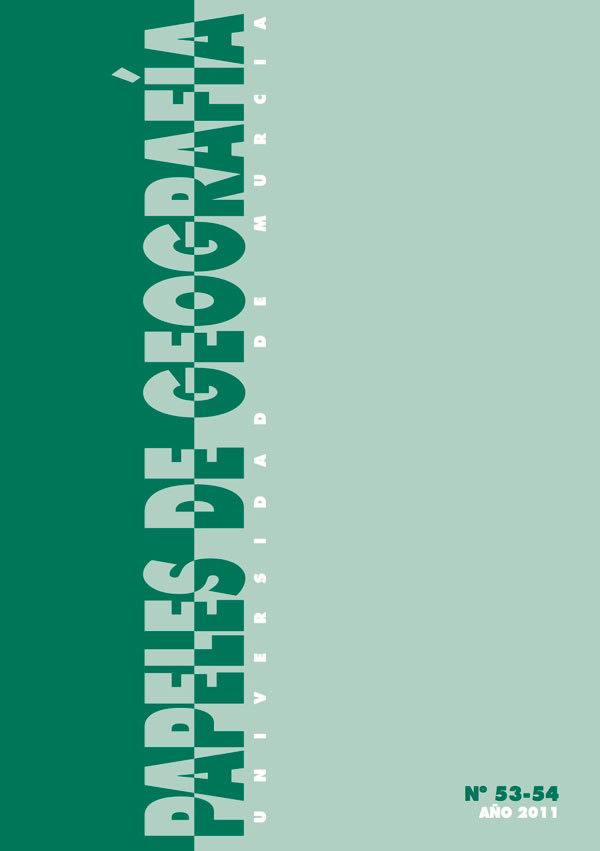Análisis of werland vegetation “Mallin” located in a semiarid area of Neuquén province (Argentina)
Abstract
Vegetation and soil are analyzed in a wetland “mallín” through the use of remote sensing techniques in a Landsat TM image and field trips. For digital image processing were used vege- tation indices based on distance and slope. The results show that the classes confined to wetter areas and greater prairie vegetation, the correlation between the two types of index is high and can be used interchangeably. In the case that the proportion of bare ground increases, the corre- lation decreases and the best rates to be applied are those based on distance. Such is the case of PVI, PVI1, WDVI. The results of the vegetation samples made in the field trips showed high degradation of the place as a result of overgrazing pursued for over a century in this ecosystem.
Downloads
-
Abstract314
-
PDF (Español (España))375
The manuscripts published in Papeles de Geografía are subject to the following terms and conditions:
1. The publishing house of the University of Murcia (Servicio de Publicaciones de la Universidad de Murcia) keeps the copyright of the published manuscripts favouring and allowing the use and distribution of such works under the licence in 2 below.
© Servicio de Publicaciones, Universidad de Murcia, 2011
2. Manuscripts are published electronically under an Attribution Non-Commercial No Derivatives 3.0 Unported Creative Commons Licence Spain (Legal text). Readers are free to copy, use, share and redistribute the material in any medium or format as long as (i) appropriate credit is given to authors and original source (journal, publishing house and URL); (ii) the material is not used for commercial purposes and (iii) this licence and restrictions are stated.
3. Self-archive. Authors are allowed and encouraged to distribute pre-print versions (prior to evaluation) and/or post-print versions (after evaluation and accepted for publication) of their manuscripts. This favours the dissemination and early distribution of scientific knowledge and citing.





